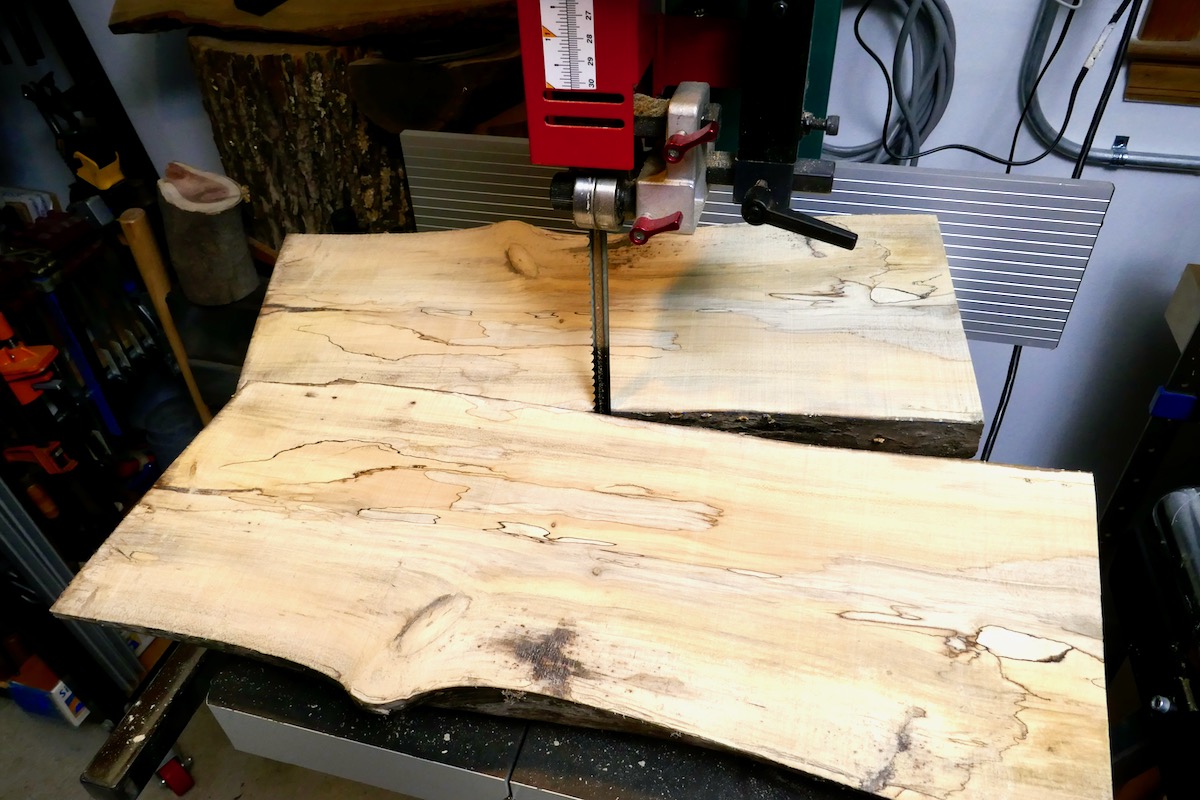We may receive a commission when you use our affiliate links. However, this does not impact our recommendations.
 Having lived in our house for over three years now, we’ve had to make some difficult decisions about our trees. Unfortunately, we had to fell a few trees upon moving in, including some sick or dead ash trees infested by the notorious Ash emerald borer. Additionally, two healthy trees growing too close to our walls had to be removed as they posed a safety hazard. One of these trees was a holly tree.
Having lived in our house for over three years now, we’ve had to make some difficult decisions about our trees. Unfortunately, we had to fell a few trees upon moving in, including some sick or dead ash trees infested by the notorious Ash emerald borer. Additionally, two healthy trees growing too close to our walls had to be removed as they posed a safety hazard. One of these trees was a holly tree.
After cutting down the holly tree, I decided to preserve the trunk, which was about 8 to 9 inches thick, and turn it into lumber using my trusty 17-inch bandsaw. To prevent it from rotting, I sealed the ends of the log with paint and placed it alongside some recently cut ash logs in the woody area of our yard. However, as often happens in life, one project led to another, and various commitments and obligations kept me away from this log for nearly three years.

Even though I sealed the end with paint, the lengthy time left outside allowed fungi spores to settle in this log.

Before bringing the log into my shop, I thoroughly brushed it with steel bristols to remove rot and other contaminants. 
When I finally returned to it, I was in for a surprise. After using a handsaw to prepare the long log for my bandsaw, I discovered that the inner core of the Holly had been infiltrated by fungi, transforming it into genuine spalted wood. This revelation shouldn’t have been shocking at all. When lumber is left outdoors, fungi spores naturally find their way to it. As fungi thrive in the moisture and sugar within timber, they make it their home, creating beautiful black, green, and brown streaks. These patterns vary from straight lines to broken lines, serpentine lines, and designs resembling mountains and lakes. In essence, the fungi paint an exquisite picture on the wood.

Realizing that the holly log was already in the process of spalting, I knew I couldn’t delay any longer. If left outside, it would likely deteriorate to a point where it wouldn’t be structurally sound for woodworking due to continued fungal consumption. Spalted wood is a delicate balance. Allowing it to remain moist or wet outside in the woods enhances the dramatic and beautiful patterns formed by fungi. However, the more the fungi infest the wood, the more it decomposes, necessitating the need to find the right moment to cut it into lumber.
Turning a Log into Lumber
If my intention was to craft furniture parts from the Holly log, I would have sliced it into longer slabs. However, considering I planned to use it for smaller projects like boxes, I chose to cut the log into shorter segments, each about 20 inches long. These segments would be more manageable on the bandsaw.

I drew a straight blue line along the log’s ridge to guide me through the ripping process. You can use a ruler or a chalk line to help you draw this line.
To ensure the slabs were flat and true, I took several steps. First, I marked a straight ridge line along the center of each log segment. Then, I carefully split the log along that line, striving to keep the log balanced as I guided it through my ½” resaw blade. Once the log was halved, I inspected each face and trimmed away any excess material that could hinder the pieces from aligning properly. Afterward, I brought it to my jointer and flattened the faces.

After sawing the log in half.





The beautiful art made by fungi.
Returning to the bandsaw, I employed an oversized fence, set at a 1-inch distance from the blade, to slice each half-log into slabs. The initial face jointing was pivotal in ensuring a perfect match to the oversized fence. Since my bandsaw maintained a precise 1-inch thickness during sawing, I didn’t need to repeat the surface jointing after each slab was cut.



In conclusion, I’ve found the jointer-to-bandsaw sequence to yield outstanding results. Once the log was transformed into lumber, I stacked the slabs with thin spacers in between them, placing them on a high shelf in my basement for a gradual drying process. Our basement is consistently dry, and the heat from the house’s heating system pipes running along the ceiling further expedites the drying process. I eagerly await the projects I’ll be able to create using this spalted holly lumber harvested from our own yard.

Here are some supplies and tools we find essential in our everyday work around the shop. We may receive a commission from sales referred by our links; however, we have carefully selected these products for their usefulness and quality.








